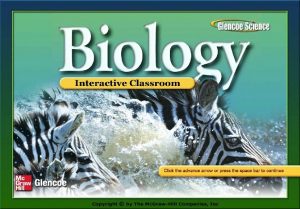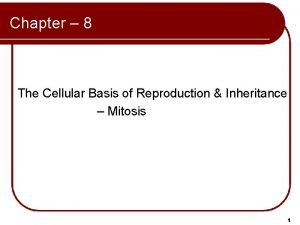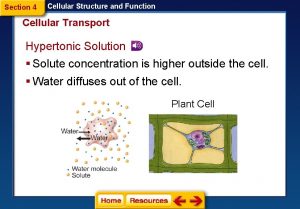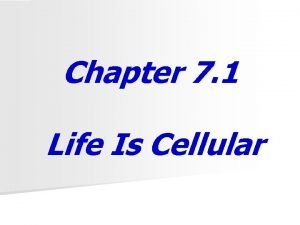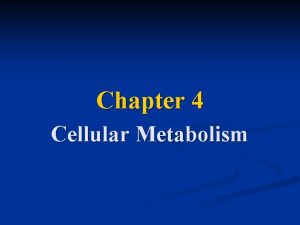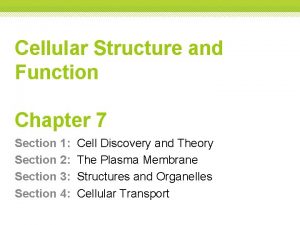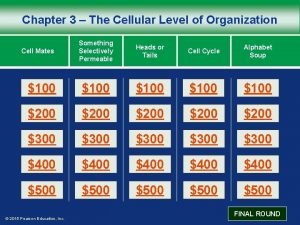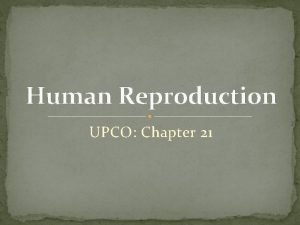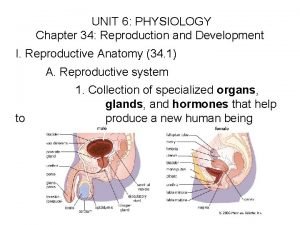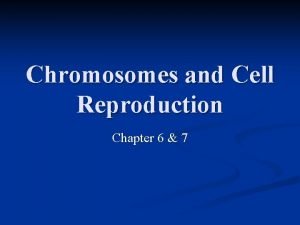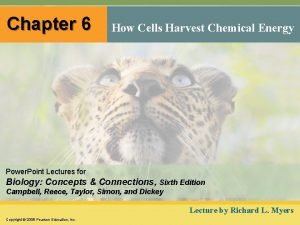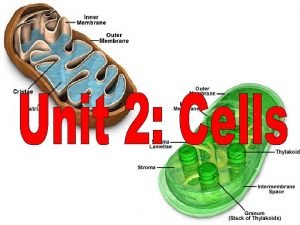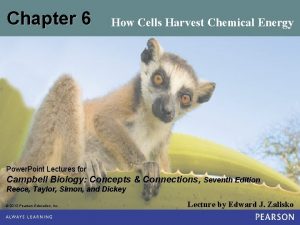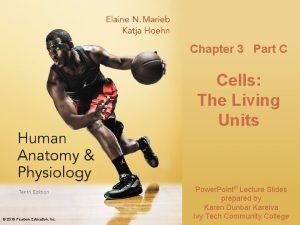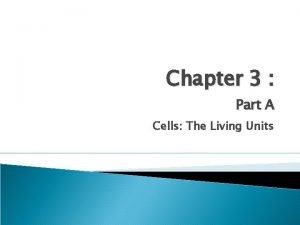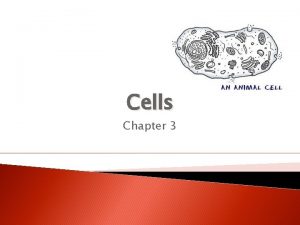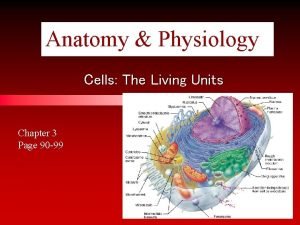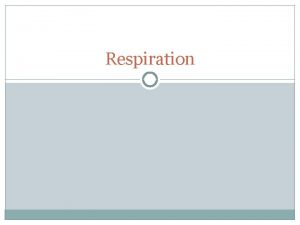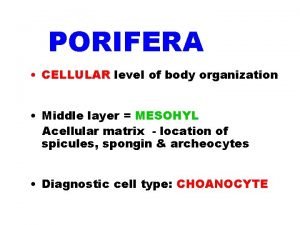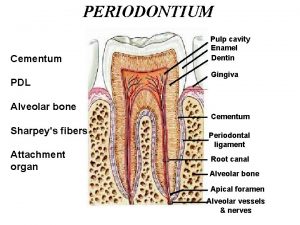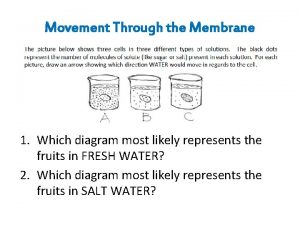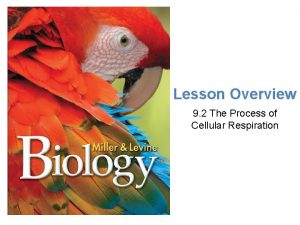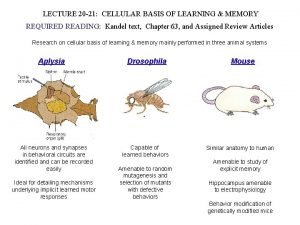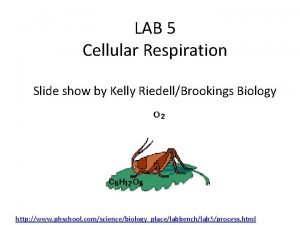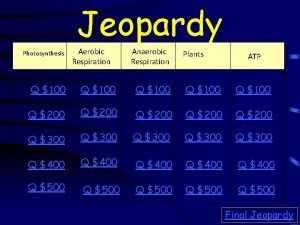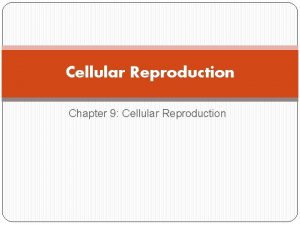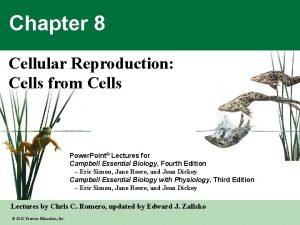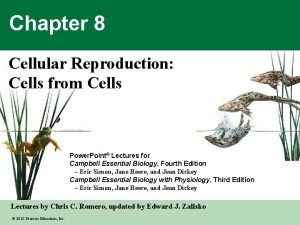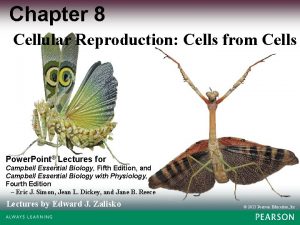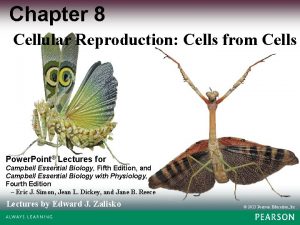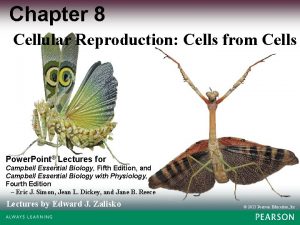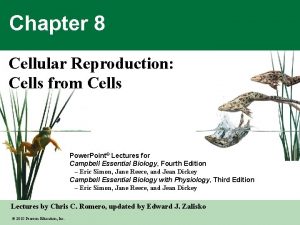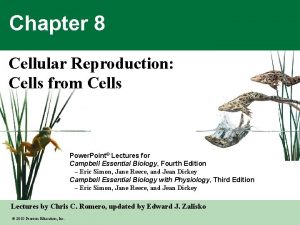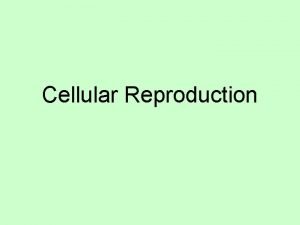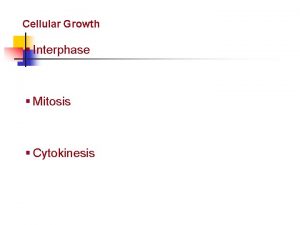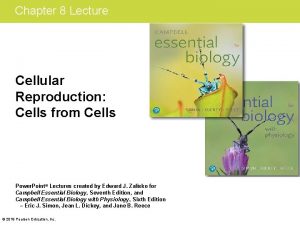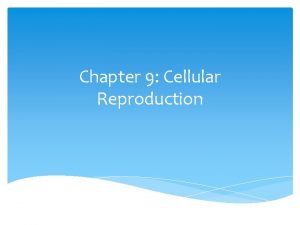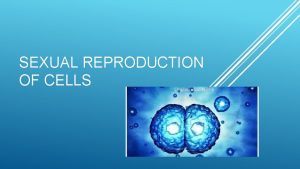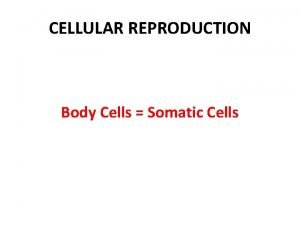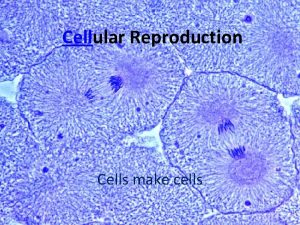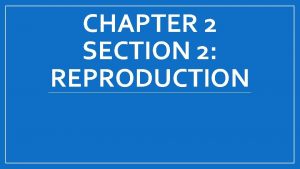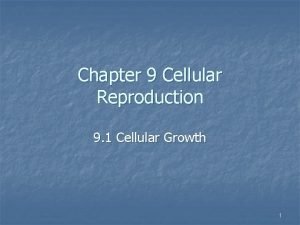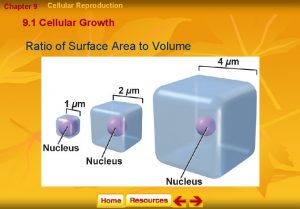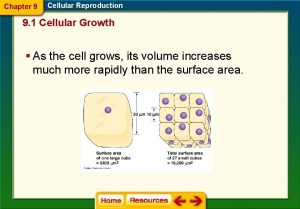Chapter 8 Cellular Reproduction Cells from Cells Power



























































































- Slides: 91

Chapter 8 Cellular Reproduction: Cells from Cells Power. Point® Lectures for Campbell Essential Biology, Fifth Edition, and Campbell Essential Biology with Physiology, Fourth Edition – Eric J. Simon, Jean L. Dickey, and Jane B. Reece Lectures by Edward J. Zalisko © 2013 Pearson Education, Inc.

Biology and Society: Virgin Birth of a Dragon • In 2002, zookeepers at the Chester Zoo were surprised to discover that their Komodo Dragon laid eggs. – The female dragon had not been in the company of a male. – The eggs developed without fertilization, in a process called parthenogenesis. – DNA analysis confirmed that her offspring had genes only from her. © 2013 Pearson Education, Inc.

Biology and Society: Virgin Birth of a Dragon • A second European Komodo dragon is now known to have reproduced – asexually, via parthenogenesis, and – sexually. © 2013 Pearson Education, Inc.

Figure 8. 0

WHAT CELL REPRODUCTION ACCOMPLISHES • Reproduction – may result in the birth of new organisms but – more commonly involves the production of new cells. • When a cell undergoes reproduction, or cell division, two “daughter” cells are produced that are genetically identical – to each other and – to the “parent” cell. © 2013 Pearson Education, Inc.

WHAT CELL REPRODUCTION ACCOMPLISHES • Before a parent cell splits into two, it duplicates its chromosomes, the structures that contain most of the cell’s DNA. • During cell division, each daughter cell receives one identical set of chromosomes from the lone, original parent cell. © 2013 Pearson Education, Inc.

WHAT CELL REPRODUCTION ACCOMPLISHES • Cell division plays important roles in the lives of organisms. • Cell division – replaces damaged or lost cells, – permits growth, and – allows for reproduction. © 2013 Pearson Education, Inc.

Figure 8. 1 a FUNCTIONS OF CELL DIVISION Colorized SEM Growth via Cell Division LM Cell Replacement Human kidney cell Early human embryo

WHAT CELL REPRODUCTION ACCOMPLISHES • In asexual reproduction, – single-celled organisms reproduce by simple cell division and – there is no fertilization of an egg by a sperm. • Some multicellular organisms, such as sea stars, can grow new individuals from fragmented pieces. • Growing a new plant from a clipping is another example of asexual reproduction. © 2013 Pearson Education, Inc.

Figure 8. 1 b FUNCTIONS OF CELL DIVISION LM Asexual Reproduction Division of an amoeba Regeneration of a sea star Growth of a clipping

WHAT CELL REPRODUCTION ACCOMPLISHES • In asexual reproduction, the lone parent and its offspring have identical genes. • Mitosis is the type of cell division responsible for – asexual reproduction and – growth and maintenance of multicellular organisms. © 2013 Pearson Education, Inc.

WHAT CELL REPRODUCTION ACCOMPLISHES • Sexual reproduction requires fertilization of an egg by a sperm using a special type of cell division called meiosis. • Thus, sexually reproducing organisms use – meiosis for reproduction and – mitosis for growth and maintenance. © 2013 Pearson Education, Inc.

THE CELL CYCLE AND MITOSIS • In a eukaryotic cell, – most genes are located on chromosomes in the cell nucleus and – a few genes are found in DNA in mitochondria and chloroplasts. © 2013 Pearson Education, Inc.

Eukaryotic Chromosomes • Each eukaryotic chromosome contains one very long DNA molecule, typically bearing thousands of genes. • The number of chromosomes in a eukaryotic cell depends on the species. © 2013 Pearson Education, Inc.

Figure 8. 2 Species Indian muntjac deer Koala Opossum Giraffe Mouse Human Duck-billed platypus Buffalo Dog Red viscacha rat Number of chromosomes in body cells 6 16 22 30 40 46 54 60 78 102

Eukaryotic Chromosomes • Chromosomes are – made of chromatin, fibers composed of roughly equal amounts of DNA and protein molecules and – not visible in a cell until cell division occurs. © 2013 Pearson Education, Inc.

LM Figure 8. 3 Chromosomes

Eukaryotic Chromosomes • The DNA in a cell is packed into an elaborate, multilevel system of coiling and folding. • Histones are proteins used to package DNA in eukaryotes. • Nucleosomes consist of DNA wound around histone molecules. © 2013 Pearson Education, Inc.

Animation: DNA Packing Right click slide / select “Play” © 2013 Pearson Education, Inc.

Figure 8. 4 DNA double helix Histones TEM “Beads on a string” Nucleosome Tight helical fiber Duplicated chromosomes (sister chromatids) TEM Thick supercoil Centromere

Eukaryotic Chromosomes • Before a cell divides, it duplicates all of its chromosomes, resulting in two copies called sister chromatids containing identical genes. • Two sister chromatids are joined together tightly at a narrow “waist” called the centromere. © 2013 Pearson Education, Inc.

Eukaryotic Chromosomes • When the cell divides, the sister chromatids of a duplicated chromosome separate from each other. • Once separated, each chromatid is – considered a full-fledged chromosome and – identical to the original chromosome. © 2013 Pearson Education, Inc.

Figure 8. 5 Chromosome duplication Sister chromatids Chromosome distribution to daughter cells

The Cell Cycle • A cell cycle is the ordered sequence of events that extend – from the time a cell is first formed from a dividing parent cell – to its own division into two cells. • The cell cycle consists of two distinct phases: 1. interphase and 2. the mitotic phase. © 2013 Pearson Education, Inc.

Figure 8. 6 S phase (DNA synthesis; chromosome duplication) Interphase: metabolism and growth (90% of time) G 1 G 2 Mitotic (M) phase: cell division (10% of time) Cytokinesis (division of cytoplasm) Mitosis (division of nucleus)

The Cell Cycle • Most of a cell cycle is spent in interphase. • During interphase, a cell – performs its normal functions, – doubles everything in its cytoplasm, and – grows in size. © 2013 Pearson Education, Inc.

The Cell Cycle • The mitotic (M) phase includes two overlapping processes: 1. mitosis, in which the nucleus and its contents divide evenly into two daughter nuclei and 2. cytokinesis, in which the cytoplasm is divided in two. © 2013 Pearson Education, Inc.

Mitosis and Cytokinesis • During mitosis the mitotic spindle, a footballshaped structure of microtubules, guides the separation of two sets of daughter chromosomes. • Spindle microtubules grow from structures within the cytoplasm called centrosomes. © 2013 Pearson Education, Inc.

Mitosis and Cytokinesis • Mitosis consists of four distinct phases: 1. Prophase 2. Metaphase 3. Anaphase 4. Telophase © 2013 Pearson Education, Inc.

Figure 8. 7 a INTERPHASE Centrosomes (with centriole pairs) Chromatin PROPHASE Early mitotic spindle Centrosome Fragments of nuclear envelope Centromere Nuclear envelope Plasma membrane Chromosome (two sister chromatids) Spindle microtubules

Figure 8. 7 b METAPHASE ANAPHASE TELOPHASE AND CYTOKINESIS Nuclear envelope forming Spindle Daughter chromosomes Cleavage furrow

Mitosis and Cytokinesis • Cytokinesis usually – begins during telophase, – divides the cytoplasm, and – is different in plant and animal cells. © 2013 Pearson Education, Inc.

Mitosis and Cytokinesis • In animal cells, cytokinesis – is known as cleavage and – begins with the appearance of a cleavage furrow, an indentation at the equator of the cell. © 2013 Pearson Education, Inc.

SEM Figure 8. 8 a Cleavage furrow Contracting ring of microfilaments Daughter cells

Mitosis and Cytokinesis • In plant cells, cytokinesis begins when vesicles containing cell wall material collect at the middle of the cell and then fuse, forming a membranous disk called the cell plate. © 2013 Pearson Education, Inc.

Figure 8. 8 b Daughter nucleus LM Wall of parent cell Cell plate forming Cell wall Vesicles containing cell wall material Cell plate New cell wall Daughter cells

Cancer Cells: Growing Out of Control • Normal plant and animal cells have a cell cycle control system that consists of specialized proteins, which send “stop” and “go-ahead” signals at certain key points during the cell cycle. © 2013 Pearson Education, Inc.

What Is Cancer? • Cancer is a disease of the cell cycle. • Cancer cells do not respond normally to the cell cycle control system. • Cancer cells can form tumors, abnormally growing masses of body cells. • If the abnormal cells remain at the original site, the lump is called a benign tumor. © 2013 Pearson Education, Inc.

What Is Cancer? • The spread of cancer cells beyond their original site of origin is metastasis. • Malignant tumors can – spread to other parts of the body and – interrupt normal body functions. • A person with a malignant tumor is said to have cancer. © 2013 Pearson Education, Inc.

Figure 8. 9 Lymph vessels Tumor Blood vessel Glandular tissue A tumor grows from a single cancer cell. Cancer cells invade neighboring tissue. Metastasis: Cancer cells spread through lymph and blood vessels to other parts of the body.

Cancer Treatment • Cancer treatment can involve – radiation therapy, which damages DNA and disrupts cell division, and – chemotherapy, the use of drugs to disrupt cell division. © 2013 Pearson Education, Inc.

Cancer Prevention and Survival • Certain behaviors can decrease the risk of cancer: – not smoking, – exercising adequately, – avoiding exposure to the sun, – eating a high-fiber, low-fat diet, – performing self-exams, and – regularly visiting a doctor to identify tumors early. © 2013 Pearson Education, Inc.

MEIOSIS, THE BASIS OF SEXUAL REPRODUCTION • Sexual reproduction – depends on meiosis and fertilization and – produces offspring that contain a unique combination of genes from the parents. © 2013 Pearson Education, Inc.

Figure 8. 10

Homologous Chromosomes • Different individuals of a single species have the same – number and – types of chromosomes. • A human somatic cell – is a typical body cell and – has 46 chromosomes. © 2013 Pearson Education, Inc.

Homologous Chromosomes • A karyotype is an image that reveals an orderly arrangement of chromosomes. • Homologous chromosomes – are matching pairs of chromosomes that – can possess different versions of the same genes. © 2013 Pearson Education, Inc.

Pair of homologous chromosomes Centromere One duplicated chromosome Sister chromatids LM Figure 8. 11

Homologous Chromosomes • Humans have – two different sex chromosomes, X and Y, and – 22 pairs of matching chromosomes, called autosomes. © 2013 Pearson Education, Inc.

Gametes and the Life Cycle of a Sexual Organism • The life cycle of a multicellular organism is the sequence of stages leading from the adults of one generation to the adults of the next. © 2013 Pearson Education, Inc.

Figure 8. 12 Haploid gametes (n 23) n Egg cell n Sperm cell MEIOSIS FERTILIZATION Multicellular diploid adults (2 n 46) 2 n Diploid zygote (2 n 46) MITOSIS and development Key Haploid (n) Diploid (2 n)

Gametes and the Life Cycle of a Sexual Organism • Humans are diploid organisms with – body cells containing two sets of chromosomes and – haploid gametes that have only one member of each homologous pair of chromosomes. • In humans, a haploid sperm fuses with a haploid egg during fertilization to form a diploid zygote. © 2013 Pearson Education, Inc.

Gametes and the Life Cycle of a Sexual Organism • Sexual life cycles involve an alternation of diploid and haploid stages. • Meiosis produces haploid gametes, which keeps the chromosome number from doubling every generation. © 2013 Pearson Education, Inc.

Figure 8. 13 -3 1 Chromosomes duplicate. Pair of homologous chromosomes in diploid parent cell 2 Duplicated pair of homologous chromosomes INTERPHASE BEFORE MEIOSIS Homologous chromosomes separate. 3 Sister chromatids separate. Sister chromatids MEIOSIS II

The Process of Meiosis • In meiosis, – haploid daughter cells are produced in diploid organisms, – interphase is followed by two consecutive divisions, meiosis I and meiosis II, and – crossing over occurs. © 2013 Pearson Education, Inc.

Figure 8. 14 a MEIOSIS I: HOMOLOGOUS CHROMOSOMES SEPARATE INTERPHASE Centrosomes (with centriole pairs) PROPHASE I Sites of crossing over Spindle Nuclear Chromatin envelope Chromosomes duplicate. Sister chromatids Pair of homologous chromosomes Homologous chromosomes pair up and exchange segments. METAPHASE I Microtubules attached to chromosome ANAPHASE I Sister chromatids remain attached Centromere Pairs of homologous chromosomes line up. Pairs of homologous chromosomes split up.

Figure 8. 14 b MEIOSIS II: SISTER CHROMATIDS SEPARATE TELOPHASE I AND CYTOKINESIS PROPHASE II METAPHASE II ANAPHASE II TELOPHASE II AND CYTOKINESIS Sister chromatids separate Haploid daughter cells forming Cleavage furrow Two haploid cells form; chromosomes are still doubled. During another round of cell division, the sister chromatids finally separate; four haploid daughter cells result, containing single chromosomes.

LM Figure 8. 14 bc LM Meiosis II in a lily cell

Review: Comparing Mitosis and Meiosis • In mitosis and meiosis, the chromosomes duplicate only once, during the preceding interphase. • The number of cell divisions varies: – Mitosis uses one division and produces two diploid cells. – Meiosis uses two divisions and produces four haploid cells. • All the events unique to meiosis occur during meiosis I. © 2013 Pearson Education, Inc.

Figure 8. 15 MITOSIS MEIOSIS Prophase Duplicated chromosome Prophase I MEIOSIS I Parent cell Metaphase I Metaphase Chromosomes align. Sister chromatids separate. Homologous pairs align. Anaphase I Telophase I Anaphase Telophase 2 n Site of crossing over 2 n MEIOSIS I Homologous chromosomes separate. Haploid n 2 MEIOSIS II Sister chromatids separate. n n

The Origins of Genetic Variation • Offspring of sexual reproduction are genetically different from their parents and one another. © 2013 Pearson Education, Inc.

Independent Assortment of Chromosomes • When aligned during metaphase I of meiosis, the side-by-side orientation of each homologous pair of chromosomes is a matter of chance. • Every chromosome pair orients independently of all of the others at metaphase I. • For any species, the total number of chromosome combinations that can appear in the gametes due to independent assortment is – 2 n, where n is the haploid number. © 2013 Pearson Education, Inc.

Independent Assortment of Chromosomes • For a human, – n = 23. – With n = 23, there are 8, 388, 608 different chromosome combinations possible in a gamete. © 2013 Pearson Education, Inc.

Figure 8. 16 -3 POSSIBILITY 2 POSSIBILITY 1 Two equally probable arrangements of chromosomes at metaphase of meiosis I Metaphase of meiosis II Gametes Combination a Combination b Combination c Combination d Because possibilities 1 and 2 are equally likely, the four possible types of gametes will be made in approximately equal numbers.

Random Fertilization • A human egg cell is fertilized randomly by one sperm, leading to genetic variety in the zygote. • If each gamete represents one of 8, 388, 608 different chromosome combinations, at fertilization, humans would have 8, 388, 608 × 8, 388, 608, or more than 70 trillion different possible chromosome combinations. • So we see that the random nature of fertilization adds a huge amount of potential variability to the offspring of sexual reproduction. © 2013 Pearson Education, Inc.

Colorized LM Figure 8. 17

Crossing Over • In crossing over, – nonsister chromatids of homologous chromosomes exchange corresponding segments and – genetic recombination, the production of gene combinations different from those carried by parental chromosomes, occurs. © 2013 Pearson Education, Inc.

Figure 8. 18 Prophase I of meiosis Homologous chromatids exchange corresponding segments. Duplicated pair of homologous chromosomes Chiasma, site of crossing over Metaphase I Sister chromatids remain joined at their centromeres. Spindle microtubule Metaphase II Gametes Recombinant chromosomes combine genetic information from different parents. Recombinant chromosomes

The Process of Science: Do All Animals Have Sex? • Observation: No scientists have ever found male bdelloid rotifers, a microscopic freshwater invertebrate. • Question: Does this entire class of animals reproduce solely by asexual means? © 2013 Pearson Education, Inc.

The Process of Science: Do All Animals Have Sex? • Hypothesis: Bdelloid rotifers have thrived for millions of years despite a lack of sexual reproduction. • Prediction: Bdelloid rotifers would display much more variation in their pairs of homologous genes than most organisms. • Experiment: Researchers compared sequences of a particular gene in bdelloid and non-bdelloid rotifers. © 2013 Pearson Education, Inc.

The Process of Science: Do All Animals Have Sex? • Results: – Non-bdelloid sexually reproducing rotifers had a nearly identical homologous gene, differing by only 0. 5% on average. – The two versions of the same gene in asexually reproducing bdelloid rotifers differed by 3. 5– 54%. • Conclusion: Bdelloid rotifers have evolved for millions of years without any sexual reproduction. © 2013 Pearson Education, Inc.

LM Figure 8. 19

When Meiosis Goes Awry • What happens when errors occur in meiosis? • Such mistakes can result in genetic abnormalities that range from mild to fatal. © 2013 Pearson Education, Inc.

How Accidents during Meiosis Can Alter Chromosome Number • In nondisjunction, – the members of a chromosome pair fail to separate at anaphase, – producing gametes with an incorrect number of chromosomes. • Nondisjunction can occur during meiosis I or II. © 2013 Pearson Education, Inc.

Figure 8. 20 -3 NONDISJUNCTION IN MEIOSIS II Meiosis I Homologous chromosomes fail to separate. Meiosis II Sister chromatids fail to separate. Gametes n 1 n– 1 Abnormal n– 1 Abnormal n n Normal

How Accidents during Meiosis Can Alter Chromosome Number • If nondisjunction occurs, and a normal sperm fertilizes an egg with an extra chromosome, the result is a zygote with a total of 2 n + 1 chromosomes. • If the organism survives, it will have – an abnormal karyotype and – probably a syndrome of disorders caused by the abnormal number of genes. © 2013 Pearson Education, Inc.

Figure 8. 21 Abnormal egg cell with extra chromosome n 1 Normal sperm cell n (normal) Abnormal zygote with extra chromosome 2 n 1

Down Syndrome: An Extra Chromosome 21 • Down syndrome – is also called trisomy 21, – is a condition in which an individual has an extra chromosome 21, and – affects about one out of every 700 children. © 2013 Pearson Education, Inc.

LM Figure 8. 22 Trisomy 21

Down Syndrome: An Extra Chromosome 21 • The incidence of Down syndrome in the offspring of normal parents increases markedly with the age of the mother. © 2013 Pearson Education, Inc.

Figure 8. 23 Infants with Down syndrome (per 1, 000 births) 90 80 70 60 50 40 30 20 10 0 20 25 30 35 40 Age of mother 45 50

Abnormal Numbers of Sex Chromosomes • Nondisjunction in meiosis – can lead to abnormal numbers of sex chromosomes but – seems to upset the genetic balance less than unusual numbers of autosomes, perhaps because the Y chromosome is very small and carries relatively few genes. © 2013 Pearson Education, Inc.

Table 8. 1

Evolution Connection: The Advantages of Sex • Asexual reproduction conveys an evolutionary advantage when plants are – sparsely distributed and unlikely to be able to exchange pollen or – superbly suited to a stable environment. • Asexual reproduction also eliminates the need to expend energy – forming gametes and – copulating with a partner. © 2013 Pearson Education, Inc.

Figure 8. 24 Runner

Evolution Connection: The Advantages of Sex • Sexual reproduction may convey an evolutionary advantage by – speeding adaptation to a changing environment or – allowing a population to more easily rid itself of harmful genes. © 2013 Pearson Education, Inc.

Figure 8. UN 01 Duplication of all chromosomes Distribution via mitosis Genetically identical daughter cells

Figure 8. UN 02 Chromosome (one long piece of DNA) Centromere Sister chromatids Duplicated chromosome

Figure 8. UN 03 S phase DNA synthesis; chromosome duplication Interphase Cell growth and chromosome duplication G 2 G 1 Mitotic (M) phase Genetically identical “daughter” cells Cytokinesis (division of cytoplasm) Mitosis (division of nucleus)

Figure 8. UN 04 Human Life Cycle Haploid gametes (n 23) Key Haploid (n) n Diploid (2 n) Egg cell n Sperm cell FERTILIZATION MEIOSIS Male and female diploid adults (2 n 46) MITOSIS and development 2 n Diploid zygote (2 n 46)

Figure 8. UN 05 MITOSIS MEIOSIS Parent cell (2 n) MEIOSIS I Parent cell (2 n) Chromosome duplication Pairing of homologous chromosome Crossing over Daughter cells 2 n 2 n MEIOSIS II n n n Daughter cells n

LM Figure 8. UN 06 (a) (b) (c) (d)
 Nondisjunction in meiosis
Nondisjunction in meiosis Chapter 9 cellular reproduction
Chapter 9 cellular reproduction Section 1 cellular growth
Section 1 cellular growth Chapter 9 cellular reproduction
Chapter 9 cellular reproduction The cellular basis of reproduction and inheritance
The cellular basis of reproduction and inheritance Asexual reproduction cell division
Asexual reproduction cell division Asexualk
Asexualk Sexual and asexual reproduction venn diagram
Sexual and asexual reproduction venn diagram Real power formula
Real power formula Sphenoid paranasal sinus
Sphenoid paranasal sinus Tubular secretion
Tubular secretion Thyroid parafollicular cells
Thyroid parafollicular cells Somatic cells vs gametes
Somatic cells vs gametes Why dna is more stable than rna
Why dna is more stable than rna Chlorocruorin
Chlorocruorin Prokaryotic cell vs eukaryotic
Prokaryotic cell vs eukaryotic Animal cells and plant cells venn diagram
Animal cells and plant cells venn diagram Prokaryotic cells
Prokaryotic cells Organelle trail
Organelle trail Masses of cells form and steal nutrients from healthy cells
Masses of cells form and steal nutrients from healthy cells Label
Label Prokaryotic cells vs eukaryotic cells
Prokaryotic cells vs eukaryotic cells Are red blood cells prokaryotic
Are red blood cells prokaryotic Cells cells they're made of organelles meme
Cells cells they're made of organelles meme Chapter 8 section 3: cellular respiration
Chapter 8 section 3: cellular respiration Chapter 8 lesson 1 life is cellular
Chapter 8 lesson 1 life is cellular Chapter 7 section 4 cellular transport
Chapter 7 section 4 cellular transport Endocytosis moves materials _____ a cell via ____
Endocytosis moves materials _____ a cell via ____ Chapter 4 cellular metabolism
Chapter 4 cellular metabolism Chapter 7 section 1 cell discovery and theory
Chapter 7 section 1 cell discovery and theory Chapter 9: cellular respiration: harvesting chemical energy
Chapter 9: cellular respiration: harvesting chemical energy Explain how amp stimulates cellular respiration
Explain how amp stimulates cellular respiration Chapter 9: cellular respiration: harvesting chemical energy
Chapter 9: cellular respiration: harvesting chemical energy Chapter 3 the cellular level of organization
Chapter 3 the cellular level of organization Chapter 20 sexual reproduction in animals
Chapter 20 sexual reproduction in animals Mendelian genetics
Mendelian genetics Chapter 21 human reproduction answer key
Chapter 21 human reproduction answer key Lesson 20.2 the male reproductive system
Lesson 20.2 the male reproductive system Chapter 19 asexual reproduction answer key
Chapter 19 asexual reproduction answer key Chapter 10 sexual reproduction and genetics
Chapter 10 sexual reproduction and genetics Chapter 34 reproduction and development answer key
Chapter 34 reproduction and development answer key Chapter 6 chromosomes and cell reproduction
Chapter 6 chromosomes and cell reproduction Solar power satellites and microwave power transmission
Solar power satellites and microwave power transmission Potential power
Potential power Flex28024a
Flex28024a Dispersive power of a grating can be defined as
Dispersive power of a grating can be defined as Power of a power property
Power of a power property General power rule
General power rule Power angle curve in power system stability
Power angle curve in power system stability Informsu
Informsu Power delivered vs power absorbed
Power delivered vs power absorbed Chapter 6 how cells harvest chemical energy
Chapter 6 how cells harvest chemical energy Chapter 3 cells and tissues body tissues
Chapter 3 cells and tissues body tissues Body tissue
Body tissue Chapter 3 cells and tissues figure 3-7
Chapter 3 cells and tissues figure 3-7 Cell membrane phospholipids
Cell membrane phospholipids Body tissues chapter 3 cells and tissues
Body tissues chapter 3 cells and tissues What is the function of the golgi apparatus
What is the function of the golgi apparatus Chapter 3 cells and tissues
Chapter 3 cells and tissues Chapter 4 cells and energy
Chapter 4 cells and energy How cells harvest chemical energy chapter 6
How cells harvest chemical energy chapter 6 Chapter 3 cells the living units
Chapter 3 cells the living units Chapter 3 cells the living units
Chapter 3 cells the living units A sticky semi fluid material found
A sticky semi fluid material found Mitosis
Mitosis Molecular level vs cellular level
Molecular level vs cellular level Redox reaction in cellular respiration
Redox reaction in cellular respiration The gray-brown haze often found over large cities is called
The gray-brown haze often found over large cities is called Chemiosmosis steps
Chemiosmosis steps Cellular respiration product
Cellular respiration product Fermentation diagram
Fermentation diagram Why is cellular respiration important
Why is cellular respiration important Porifera body organization
Porifera body organization Complimentary processes
Complimentary processes Cellular respiration chemical equation
Cellular respiration chemical equation Cellular respiration reactants
Cellular respiration reactants Photosynthesis formula
Photosynthesis formula Cementum
Cementum Starting materials for cellular respiration
Starting materials for cellular respiration Cellular network range
Cellular network range What happens during glycolysis
What happens during glycolysis Overview of cellular respiration
Overview of cellular respiration Overview of cellular respiration
Overview of cellular respiration Cellular respiration
Cellular respiration Total atp produced in cellular respiration
Total atp produced in cellular respiration Ltp
Ltp Lab bench cellular respiration
Lab bench cellular respiration Cellular system
Cellular system Is protista unicellular or multicellular
Is protista unicellular or multicellular What is the word equation for cellular respiration
What is the word equation for cellular respiration Cellular events of acute inflammation
Cellular events of acute inflammation Cardinal features
Cardinal features


